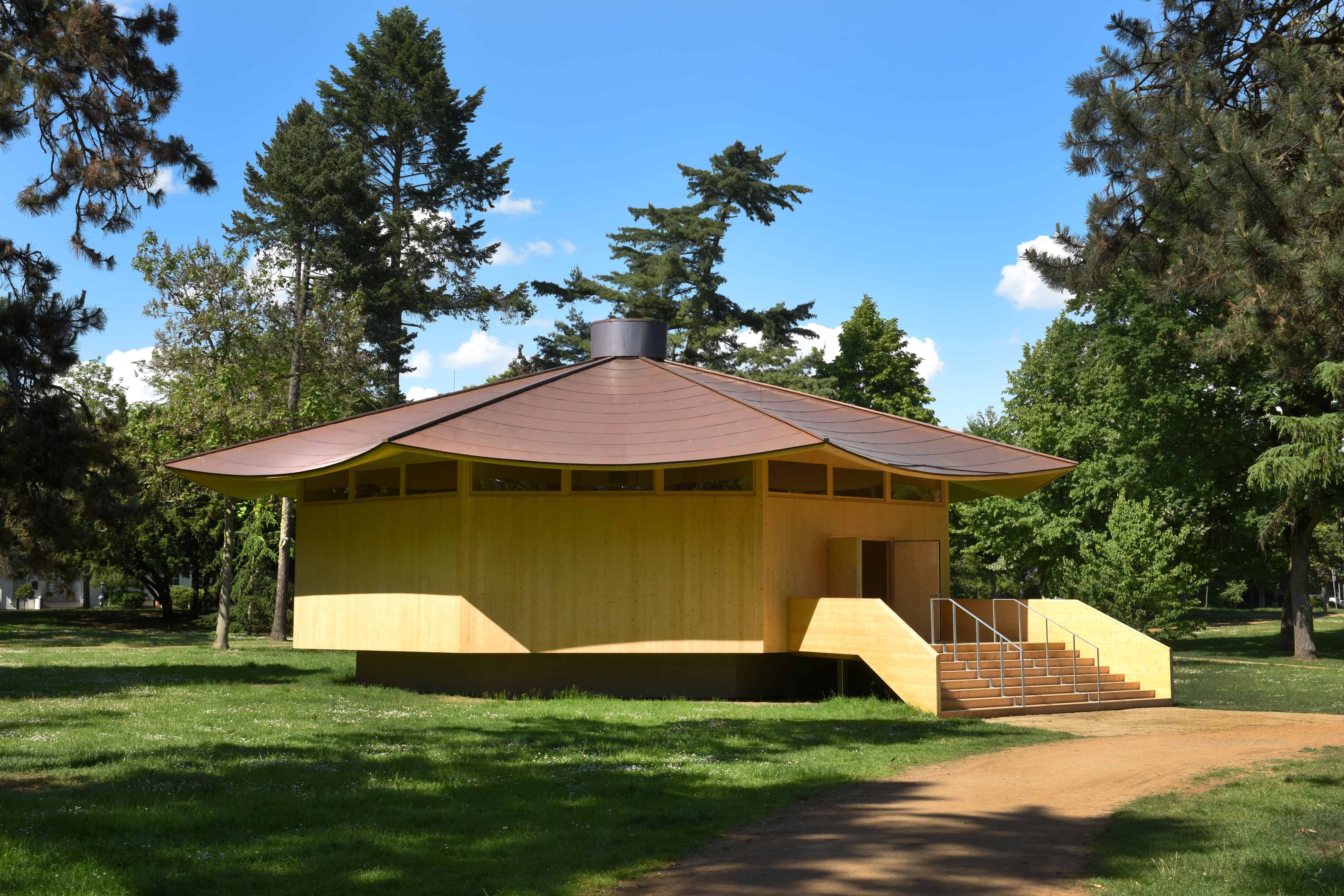At first glance, the octagonal central building with its curved copper roof has nothing to do with the Bauhaus. The pavilion evokes rather contradictory associations: On one hand, it resembles memorial buildings like the Pantheon in Rome, which serves a purpose of elevation; on the other hand, its inner structure resembles a panopticon, an architecture of surveillance and control. However, the bright larch wood and the curved roof shape counteract all affiliations. The Krefeld Pavilion is above all a free poetic form.
The building is operated by the project MIK e.V., an association of committed Krefeld residents and professionals. Since 2010, it has dedicated itself to research projects, exhibitions, publications, and films on the design avant-garde of the early 20th century. The focus is on the architect Ludwig Mies van der Rohe and the Bauhaus and their connections to the Rhineland, the Rhineland velvet and silk industry, and their protagonists, institutions, and associations.

From 2015 to 2019, the project MIK conceived and realized the research and exhibition project "Bauhaus and the Silk Industry in the Krefeld Pavilion by Thomas Schütte" as the NRW contribution to the 100th Bauhaus anniversary. It focused on the diverse connections of the reform school to Krefeld. The emphasis was on the cultural-industrial network of representatives of the artistic avant-garde, protagonists of the silk industry, and various institutions from the 1920s to the post-war period. The artist Thomas Schütte created the Krefeld Pavilion as the exhibition building in the Kaiserpark Krefeld for the exhibition.
